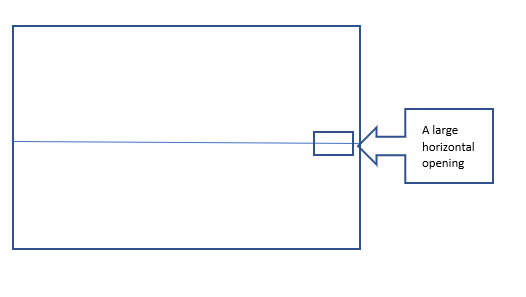Hello!
I'm modelling a large atrium with natural ventilation to test the cooling effects of the natural ventilation.
For this atrium, to prevent the smoke spreading in fire, it sets a floor in the middle and connects upper part with lower part by a large horizontal opening. As shown in the picture.

For this problem, as the I/O reference mentioned, it cannot use the airflow network, because it cannot calculate the temperature stratification. So, it needs to use a Roomair:node: airflowNetwork. However,there is a confusion. It can defines a AirflowNetwork:intrazone: linkage by using a crack to simulate the horizontal opening.
But does it mean that it cannot take the impacts of the floor in the simulation? Because if it uses the Roomairnode model, it assumes the atrium including upper part and lower part in one thermal zone. How can Energyplus tackle with this situation.



